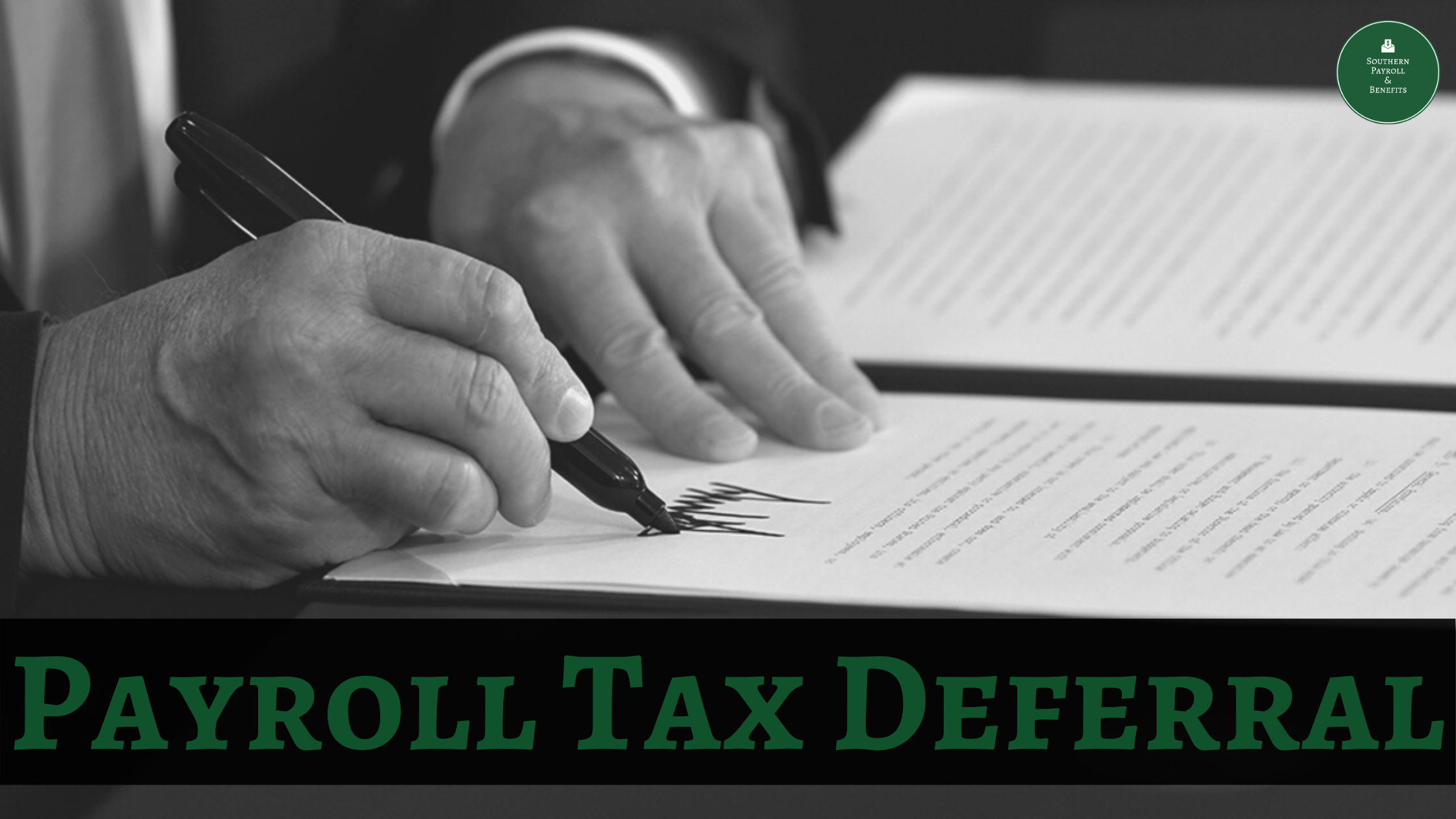What Happened?
On August 9, 2020, President Donald Trump issued a handful of executive orders (or memorandums) in an attempt to revive the U.S. economy. One of those executive orders pertains to a “payroll tax deferral”, which provides vital funding for Medicare and Social Security. This has left many people confused, including countless business owners and financial experts. Let’s dive in and see what this order is, and how it will change business for the future ahead.
What Is The Tax Cut?
The executive order, “Memorandum on Deferring Payroll Tax Obligations in Light of the Ongoing COVID-19 Disaster”, includes instructions to suspend certain payroll taxes for American workers earning less than $4,000 on a pre-tax biweekly basis, or $104,000 annually. If your paycheck is less than $4,000 every other week, your take-home pay is increased by a payroll tax cut. Long story short, the payroll tax cut gives you a four-month 6.2% ‘raise’.
CEO of Southern Payroll of Benefits, George Wilson, prepared a hypothetical example:
“Based upon what we know thus far, that the holiday would temporarily waive the 6.2% Social Security tax on employees, and would be in effect from 9/1/2020-12/31/2020. Important to keep in mind, this tax would still be due, it isn’t a permanent waiver. For this example, I’ve used an employee in Chattanooga, TN, making $15 per hour, filing Single, with no additional Withholding or Deductions, working 40 hours a week and paid weekly.
– Employees Gross Pay is $600 a week, and their usual Net Pay is $514.51.
– Employees new Net Pay under payroll tax cut holiday would be $551.71, an additional $37.20 weekly.
– Total additional funds to the employee over the 17 pay periods would be $632.40.
– Assuming the taxes are due back on Friday January 1st, 2021, that employee would owe their entire net paycheck for the week plus $117.89.”
What Will This Do To Social Security?
Americans are worried that the suspension of payroll taxes will deal damage to the Social Security program, which many rely on to pay their bills. As of right now, the executive order only suspends Social Security payroll taxes – it does not eliminate them. It would take Congressional approval to totally forgive this tax debt.
Essentially, Social Security funding will not drop. Instead, money will be transferred from the federal government’s general fund to the Social Security trust funds to cover any payroll tax amounts not collected. Until further guidance is released from government officials on this, most people are waiting to see how this will all play out.
Can This Be Forgiven?
As it stands, payroll taxes accumulated from September 1st through December 31st will be deferred, not forgiven. Treasury Secretary, Steven Mnuchin, stated in an interview with Chris Wallace, “Trump is going to go to the American people and tell them that when he’s reelected, he will push through legislation to forgive that so, in essence, it will turn into a payroll tax cut.” These political moves could lead to possibilities of forgiveness around election time.
Some Questions Left Unanswered
· Can employers elect to not participate?
· How do you count wages and compensation? Do tips count? Annual bonuses?
· What year do you base the wages on?
· Will the deferred payroll taxes need to be repaid? And if so, how?
Should You Participate?
Until there’s more information about whether or not this money will need to be repaid in the future, we would advise caution on spending plans, and to anticipate the possibility that any taxes which have been deferred will need to be repaid next year. At this point, there’s no telling if the eventual payment of the deferred taxes will ultimately be avoided.

